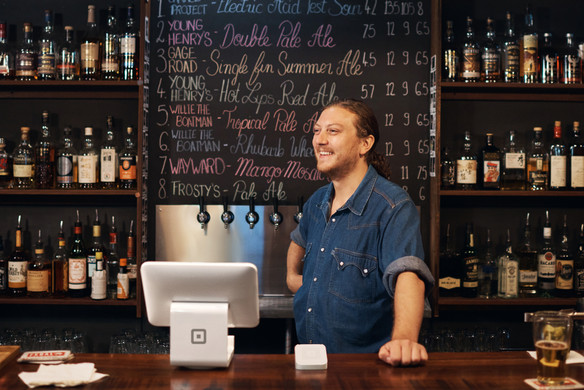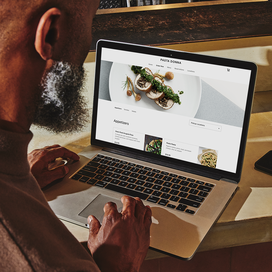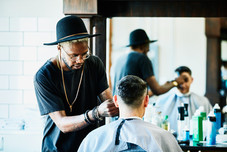Table of contents
Owners that overspend when starting their bar are at risk of failure. But under-spending can also force bars to close down.
So how do you find the balance? How much does it cost to open a bar? You should look at a few factors:
Bar startup costs
Your bar startup and operating costs include some essentials for any kind of bar, plus a variety of factors that are up to you as a business owner. Here are the right places to get started as you plan ahead.
License fees
Liquor license: This is an essential first step for opening your bar. The process and cost of acquiring a liquor license varies from state to state, but you should be prepared to submit an application outlining the details of your type of bar, your hours of operation, whether or not you are making any of your own alcohol on location to sell, and if you will allow customers to bring in their own alcohol. From start to finish, this can take a few weeks or several months, with the cost ranging from a few hundred to tens of thousands of dollars, depending on your location. Certain areas also have a limited number of liquor licenses, so you might need to wait for availability.
Business license: Every state — and some cities — require a business license to operate, certifying that your establishment is safe for the public. This can cost anywhere from $25 to several hundred dollars. Check out a state-by-state guide to business licenses here.
Food service and live entertainment licenses: While not essential for every bar, these are good tasks to get started with early if you’re planning to serve food or host live events in your space. The costs and process will vary based on city and state regulations.
Bar equipment
As you’re thinking about the necessary equipment and hardware for your bar, start with the essentials and then move on to items specific to your type of bar and your atmosphere.
Refrigeration: The type of refrigeration will depend on the capacity at your location, but most new industrial fridges for bars cost at least $1,000.
Glassware: The price range here is entirely up to your vision for the bar. You can get a large set of cheap glasses in bulk, partner with another local business to make custom glassware for your location, or something in between.
Furniture: Customers likely will need somewhere to sit (or lean) at your bar. This is another cost that will vary based on the type of bar you envision. One option that can help as you look to staff up: Tables or high tops with QR codes so customers can order another round on their own.
Type of bar
The type of bar you decide to open influences the size of the space you need and other costs to open a bar. Here are a few bar options you can consider:
New bar: You’ll need to decide if you’re starting a bar from scratch or taking over an existing space. A new bar, whether you’re converting a space or taking over a completely empty spot, likely will come with more startup costs but offer you more options to make the location your own.
Established bar: If you’re trying to get up and running quickly with lower startup costs, look around for a previously owned and operated bar to take over. You’ll still have plenty of ways to make it your own.
Dive bar: A well-worn bar that usually skips the frills is also known as a dive bar. The name of the game here is simplicity and authenticity, rather than overworked decor and fancy cocktail lists. At a dive bar, guests can enjoy cheap drinks and relax. The biggest costs drivers are size and seating.
Sports bar: If you’re drawn to a large space, filled with TVs, flavorful wings, and a wide selection of beer, opening up a sports bar could be your calling. Sports bars are usually found in dense areas of a city and serve as a great spot where large groups can meet up to watch a game or hang out. Beer is the primary focus for sports bars, but many also have liquor and wine. There is often food at a sports bar as well. Sports bar owners focus their spending on space, seating, and entertainment factors that include TVs, pool tables, and dartboards. Most sports bars have busy hours that align with games, so food prep is another major cost driver.
Wine bar: A wine bar is an elegant establishment where people can come enjoy a variety of wines and light appetizers in smaller groups. The focus of the wine bar is usually on the bar itself, with limited seating. Your staff is a huge cost because you need to hire sommeliers and other specialists trained in wine.
Cocktail bar: Known for their hyperlocal environment and mixologists that craft exquisite masterpieces, cocktail bars have become wildly popular to open up. Elements of a cocktail bar include a small bar, stocked with high-quality liquor and funky additives. Limited seating space creates an intimate vibe, alluding to exclusivity. Most cocktail bars only serve liquor and have a selective wine list. While you may reap the benefits of renting a smaller space, the interior design and ingredients are important in setting the mood in a cocktail bar.
Nightclub: A nightclub is an establishment for nighttime entertainment like live music, DJs, and dancing. You should look for an outsized space that can generally accommodate a larger group of people. Nightclub owners spend a good portion of their money on decor, lighting, and the amount of employees needed to run a club. In most cases, a nightclub requires the most funds when getting off the ground.
Your dream bar could also fall somewhere in between these categories, and that’s okay. The most important thing is to determine your target market and then understand what elements you need to make that bar successful.
Staff
The amount of staff you hire and the roles for which you hire will also affect the costs to open a bar.
First you want to think about the bar manager. Some bar owners take on this position themselves when they first open. Others hire a trusted individual to help drive the bar’s success.
If you do hire a bar manager, you want someone who has experience in the restaurant industry, particularly at the type of bar you want to open. That way, the bar manager has a specialized understanding of how to purchase stock and manage bar inventory.
Behind the bar itself, you need to hire bartenders who can legally serve alcohol, as well as barbacks. Instead of actually serving drinks to customers, barbacks focus on cleaning the bar, restocking ingredients, and maintaining the operations of the bar throughout the night.
If food is being served, you need to hire the appropriate kitchen staff to cook and serve customers. Some of the kitchen staff needed at a bar includes:
- Chefs
- Sous chefs
- Line cooks
- Servers
- Bussers
Specialty bars, like wine bars and cocktail bars, may require additional industry experts like sommeliers and mixologists.
You should decide how much to pay your employees in advance and keep rates consistent across roles. This may be easier for roles that pay hourly. But keep in mind that employees like sommeliers, mixologists, and chefs or managers are likely to be salaried positions, so be sure to think about salary ranges for them.
Once you hire your employees, the next steps are to onboard all staff members and then set up payroll so everyone can get paid.
Location
Not only does the location of your bar influence the type of clientele you have and the vibe you create but also the cost per square foot.
The cost of your location depends on a few things:
- The real estate surrounding your location
- The amount of foot traffic
- The size of the space
- The amenities it already includes
- How recently the site has been renovated
Technology and POS system
The technology you invest in when you open up a bar should ultimately save you time and create a cohesive flow in your daily operations.
Put yourself in the customer’s shoes and think about a time you have sat at the bar and waited for a payment to process. Limited payment options (like cash-only), glitches in the system, or lengthy processing times can frustrate a customer and leave a negative impression.
The fast-paced bar environment calls for an efficient payments system that can keep up with the crowd. You should look for a payment processing solution that accepts any form of payment, so you aren’t losing out on potential customers. This includes being able to accept cash as well as magstripe cards, EMV chip cards, and mobile payments like Apple Pay.
Alongside a reliable payments system, you should also have an integrated point-of-sale system, specifically designed for your bar. A bar POS is intended to keep your bar organized, offering a point-of-sale solution that also allows you to handle complicated modifiers, manage menus, open tabs, split bills, and track tipping.
Marketing
Without a strong marketing plan, your bar will struggle to bring in customers, but initial efforts can get pricey. It is important to understand which marketing channels are available to you — for example, email, social, content, and other paid digital marketing — and come up with a custom strategy that aligns with your goals.
When you are first starting out, focus on hyperlocal marketing tactics that will pull new, local customers into your bar. Two ways to do this are with social media and online review sites.
Social media: It is important to utilize social media and create accounts that can help build your brand awareness. You can also look into paid advertisements on social media platforms that can target specific audiences. Learn more about best practices for Instagram, Facebook, and other social media outlets that can benefit your bar.
Reviews: The online reviews of your bar play an important role in its initial success, so it is important to monitor outlets like Yelp and encourage recurring customers to review your bar.
The cost to open a bar ultimately depends on how you decide to allocate your spending within these five categories. So before you dive in, assess the specific costs for your bar and create a realistic budget. Be sure to include your assessment and analysis in your bar business plan, so you have a place to reference your goals. Then make sure you follow that budget to the letter.
![]()











